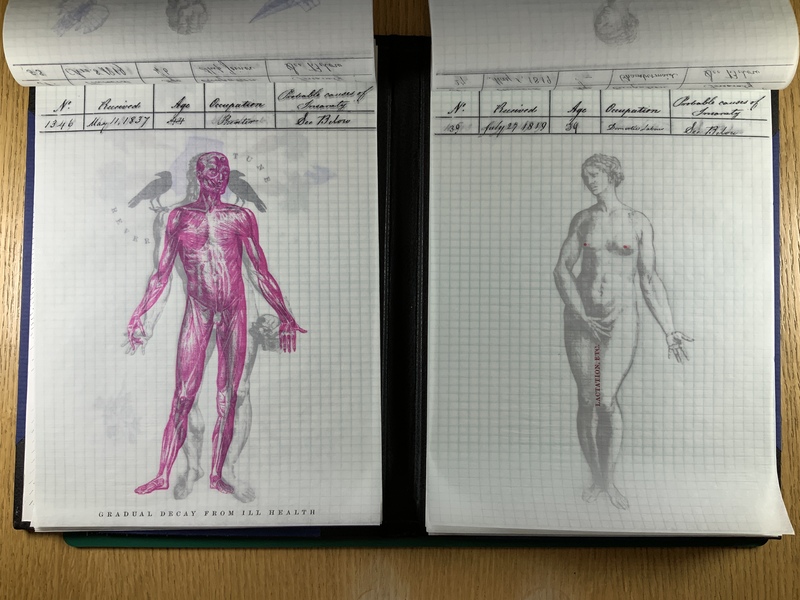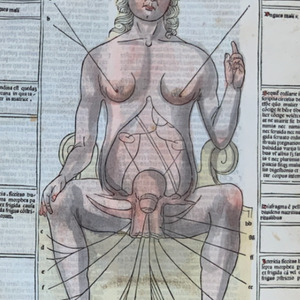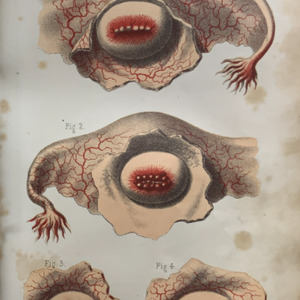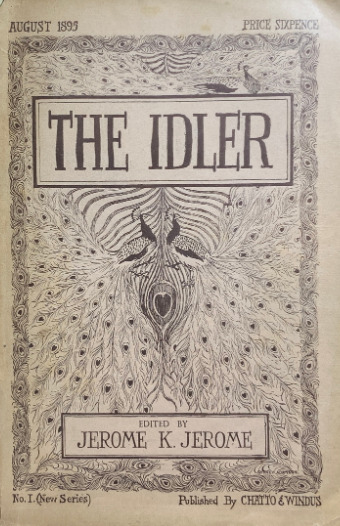The Weaker Sex: Female Bodies as Distorted Male Figures
The illusive concept of normalcy is intrinsic in fields like medicine that exist to identify and treat abnormalities. In the case of 19th century medicine, the “normal body”- that served as a sort of standard- was inherently male. Consequently, the female body was viewed as the inverse of the male, almost like a deformity in itself. This gendered view of medicine allowed for normal female processes and anatomies to be coded as “symptoms” or “illnesses,” which would later become the framework for the hysteria diagnosis.
The “disease” was largely agreed to be centered in the breasts, uterus, and vagina. Published in 1913, Minds in Distress: A Psychological of the Masculine and Feminine Mind in Health and In Disorder identifies the primary cause of hysteria, declaring that “its very derivation denotes womb disorder pure and simple.” Such disorder in the womb was thought to cause seemingly unrelated symptoms such as anxiety, depression, headaches, and joint pain. Furthermore, even healthy female menstruation was recognized as a symptom of such womb disorder by Observations on the Nature, Causes, and Cure of Those Disorders Which Have Been Commonly Called Nervous, Hypochondriac, or Hysteric. The male authored, 1767 medical publication ironically cited both long and short, heavy and light, and regular and irregular periods as indicators of hysteria. Essentially, any negative symptoms, no matter how mundane or unrelated they may have been, were medically considered to be a side effect of womb disorder. Such wide arrays of symptoms blurred the lines between having so-called hysteria, and simply existing as a typical woman. A diagnosis of hysteria was essentially a diagnosis of being female.
As hysteria grew to encompass all inherently female conditions, the “illness” became a clever disguise for the negative connotations that were associated with the female body. For instance, women were thought to be less advanced than their male counterparts. This is exemplified in the artist book Anatomy of Insanity which reduces female insanity to issues with the reproductive system. This is a stark contrast to the male’s characterization which attributes male insanity to complex issues of the mind connection with many different bodily systems. Such a view is consistent with the idea that reduced female experiences, whether they were symptoms or not, to the diagnosis of hysteria and an assumed issue with the womb.
The way the womb, particularly the vagina, was portrayed during this time was heavily influenced by male opinion. The “normal” vagina is pictured in The Household Physician in a way that is so grotesque, it appears to be infected. The image is anatomically incorrect and shows teeth-like structures. Similarly, Joannes de Ketham depicts the vagina as the inverse or deformed penis. Once again, this supposed medical source has little anatomical accuracy. Therefore, these sources have no medical use beyond spreading the harmful ideas that women’s bodies are to be feared or are inferior to those of men. This negative idea of the female body is then assimilated into a society that has been fed sexist lies. The censorship and dehumanization of the vagina pictured near a Beecham's advertisement in the Idler reflects this sentiment. Though not the actual advertisement, the cover art puts the reader into a state of mind associating hysteria with female genitalia. Two peacocks and a heart form the suggestion of a vagina with enough subtlety to give a very inanimate feel to the female body. This is largely a reflection of the medical publications that paint the vagina as subhuman. These (male) doctors had such power that allowed them to create academic material about women’s bodies based entirely on prejudices and pass it off as fact. It is this same power that diagnosed countless women with a disease that does not exist.



